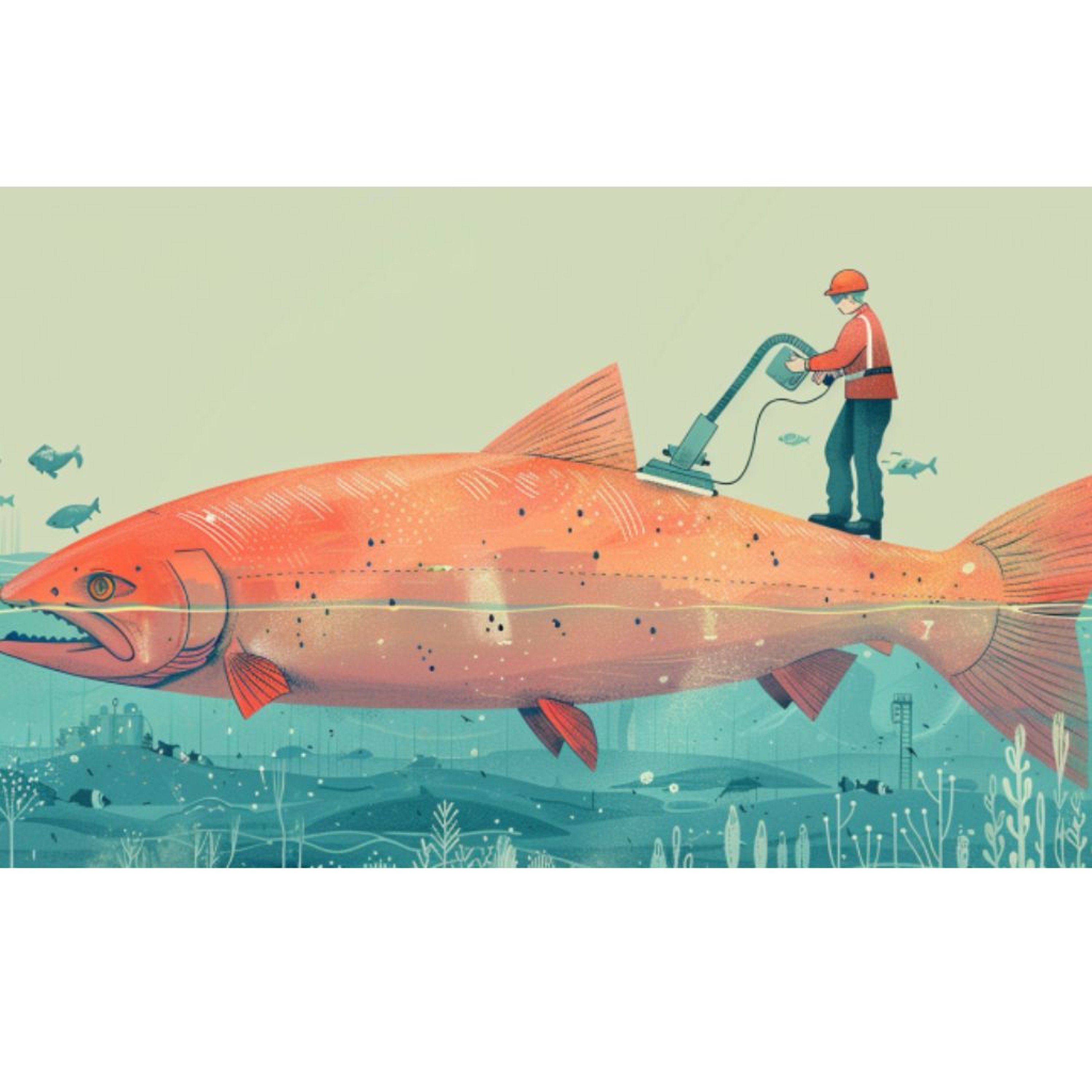No Future for Net Pen Salmon CAFO
- Author
- roy.hales9.gmail.com
- Published
- Mon 07 Oct 2024
- Episode Link
- https://soundcloud.com/the-ecoreport/no-future-for-net-pen-salmon-cafo
De Clarke/Cortes Currents - There was some bad news this month for the Norwegian fish feedlot industry in Canada: their own trade magazine featured the following headline:
The Critics Are Right: It’s Time To Close Down Salmon Farms
As many of our readers know, the Norwegian salmon feedlot industry continues to defend its BC operations fiercely against critique from fishermen, environmentalists and marine biologists. Despite the political clout of this lucrative industry, and after years of activism, research and protest, several “salmon farms” were finally removed from the Discovery Islands channels — a constrained migratory path for wild salmon.
This removal was in response to evidence that researchers and activists have been presenting for years that the effluent from Atlantic salmon feedlots damages the health of wild salmon as they pass through it. Not only do the feedlots use antibiotics and pesticides to keep the non-native fish alive in their high-density close confinement, critics say; but the crowded and unhealthy fish are a perfect breeding ground for sea lice, a natural parasite that affects salmonids on the BC coast. Critics of the industry say the locally inflated superdense population of sea lice from the infested salmon feedlots, has been spilling over onto the migrating salmon, weakening the fish and reducing their numbers.
This theory was strengthened a year after the fish feedlot removals; returns of pink salmon in the Discovery Islands corridor were reported to be significantly larger than they had been for several years. Many took this as a vindication of long-standing criticisms of salmon feedlot operations.
There are many pressures on salmon, including destruction of riparian habitat by logging, overfishing of small fish species lower on the food chain, and the warming of our coastal waters due to climate change. The fish feedlot industry has vigorously insisted that any decline in wild salmon populations is due to these other factors, and has nothing to do with their activities — and that sea lice in particular are not a problem.
Meanwhile the BC industry spent about 40 million dollars in 2020 on a specialised vessel from Norway, equipped. among other things, to vacuum the sea lice off the feedlot fish. [This large investment in a “delousing ship” at the time led one mischievous fisherman on Facebook to suggest that maybe they were focusing on the wrong species — and should be harvesting the sea lice as their protein-rich product.]
